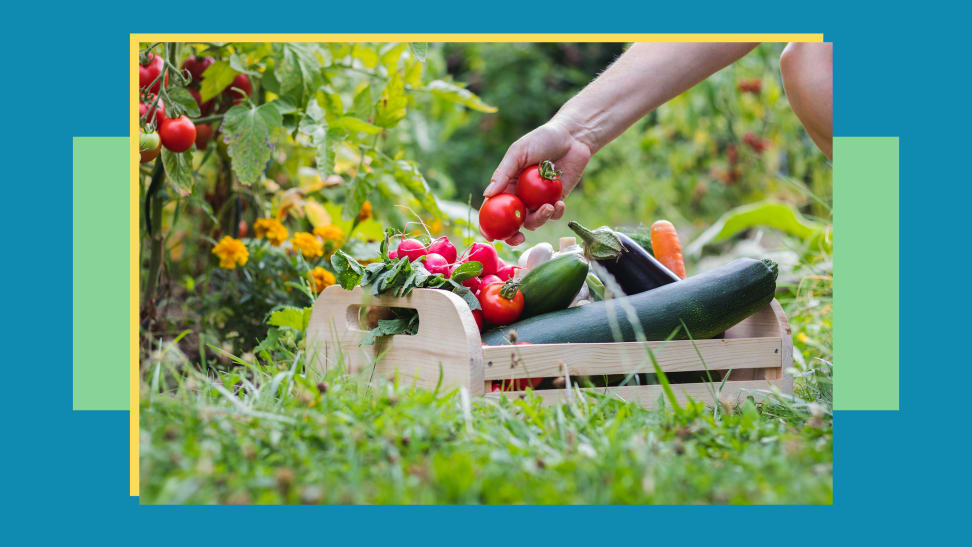 Credit:
Reviewed / Zbynek Pospisil
Credit:
Reviewed / Zbynek Pospisil
Products are chosen independently by our editors. Purchases made through our links may earn us a commission.
Congratulations! All your hard work building raised garden beds, planting, watering, and weeding your garden is paying off, and your garden veggies and fruits are ready to harvest. But picking five quarts of cherry tomatoes or a big batch of green beans can be a little daunting—not to mention hard on your back and knees.
Here are five ways to make collecting your garden harvest simple and easy.
1. Get your timing right
The key to harvesting great garden vegetables is to pick them when they’re at the peak of ripeness. Pick them too early, and your garden produce will be small and sour or bland; pick them too late, and your carefully nurtured fruits and veggies will be tough, hard, stringy, or rotten.
Check your garden frequently to monitor your crops. Remember, at the height of the season, a vegetable like zucchini can grow from the size of a cotton swab to an inedible baseball bat in a matter of days. Okra is also notorious for rapidly transitioning from tender to tough; pick it every two days, preferably when the pods are two inches to three inches long.
If possible, pick your produce in the morning. They’ll have absorbed moisture from the damp and dew, and some veggies convert starches to sugars overnight and become sweeter.
2. Use a sharp knife
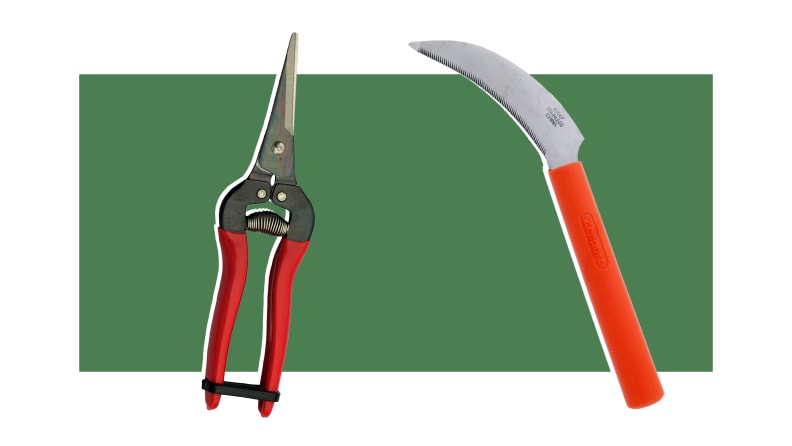
Easy pickings, now!
When you’re eager to pick your veggies, it’s easy to tear stems or pull the plant right out of the ground. Keep your plants safe for future harvest by using a knife, pruner, or scissors to harvest your garden’s bounty, not just your bare hands.
For asparagus, berries, lettuce mixes (mesclun), spinach, and herbs like parsley and cilantro, a small curved knife like a serrated sickle knife works well. The curved blade makes it easy to sweep around and up through stems. It works well for vining stems of cucumbers and summer squash too.
If you’re snipping thin, woody stems of fruit or herbs like sage, a pair of needle-nose fruit pruners comes in handy.
For thicker broccoli, cabbage, or cauliflower stems, look for a large knife like a small machete. Beets and carrots should come out of the earth when you pull at the base of their stems. If they don’t, dislodge them with a digging knife, but be careful not to dig too close so you won’t damage the tasty roots.
3. Some crops need special tools
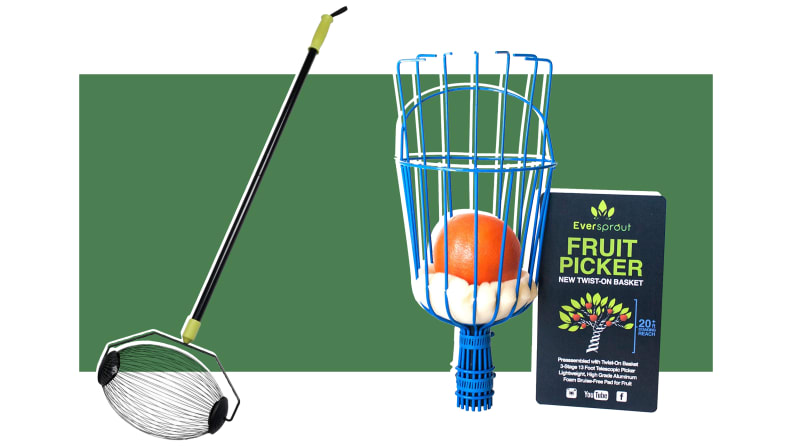
For the hard-to-reach fruits.
Yes, you can shake apple trees to get the fruit, but you’ll end up with a bunch of bruised fruit with broken skin (and maybe a lump on the head). Get a pole-end fruit picker cage attachment that attaches to the end of a mop or rake handle to get to those high-up apples, pears, peaches, or citrus crops. Cradle your fruit in the picker, twist, and you’re done—no bruising on the fruit or your noggin.
Crab apples and nuts can be mowed off the lawn with a rolling nut harvester, which looks like it should be used for selecting bingo balls.
4. Get your carrier ready
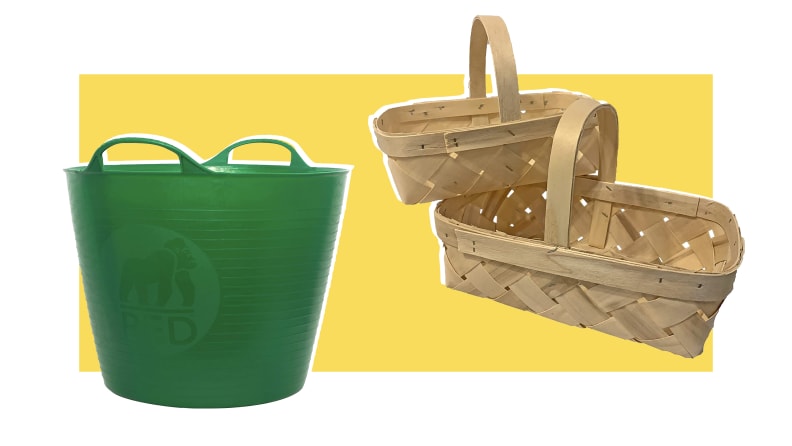
Guaranteed safety for your pickings.
You know what makes a red, ripe, tomato taste terrible? Falling out of your hands and smashing on the sidewalk while you try to carry too many things at once. There are better ways to carry your precious veggies from yard to table.
For sturdy crops like beans, squash, or cabbages, try a Tubtrug two-handled flexible plastic tub. They come in a variety of sizes that are suitable for small garden harvests like peas and herbs, to larger hauls including several cabbages, and has enough storage space to hold up to five large tomatoes.
Want to carry your garden harvest hands-free? The Roo Garden Apron comes in four colors, fits people up to six-foot-four-inches tall.
Super-ripe tomatoes and tender strawberries, blueberries, and blackberries need to be carried in a shallow container so they don’t get crushed. These farm stand baskets can keep your summer produce safe—and they’re long enough to chard, collards, and other leafy crops.
Upgrade to heavy-duty garden hods for large loads like carrots or beets with greens.
5. Figure out where to put them
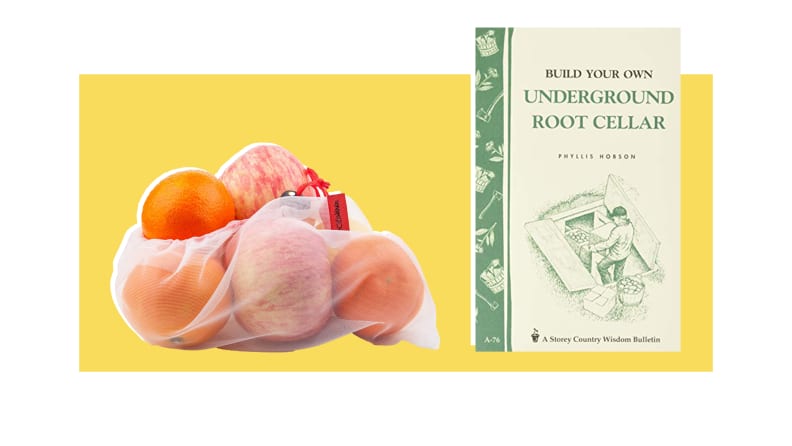
Where you store your fruits is key to making them edible.
Maybe you’re ready to make seven quarts of canned tomato sauce, maybe you’re not. You can keep garden crops like basil, beans, and summer squash for at least a week, and sturdy crops like beets and cabbage can last for five months or more – if you keep them in the right conditions.
You can check if your veggies need cool or cold and moist or dry conditions in this chart by the University of Minnesota. Never refrigerate ripe garden tomatoes unless you want them to turn into mealy, flavorless lumps.
Don’t store your veggies in plain plastic bags in the refrigerator; they’ll get too humid, which leads to mold and bacterial growth. Use perforated plastic bags to keep your fruits and veggies comfortably cool.
Refrigerators are cold and dry, and basements are usually cool and dry. To store root vegetables like beets and carrots long-term you’ll need a cool, moist place for them. You can use a root storage bin with moist sand, build a root cellar, or bury them.
The product experts at Reviewed have all your shopping needs covered. Follow Reviewed on Facebook, Twitter, Instagram, TikTok, or Flipboard for the latest deals, product reviews, and more.
Prices were accurate at the time this article was published but may change over time.


